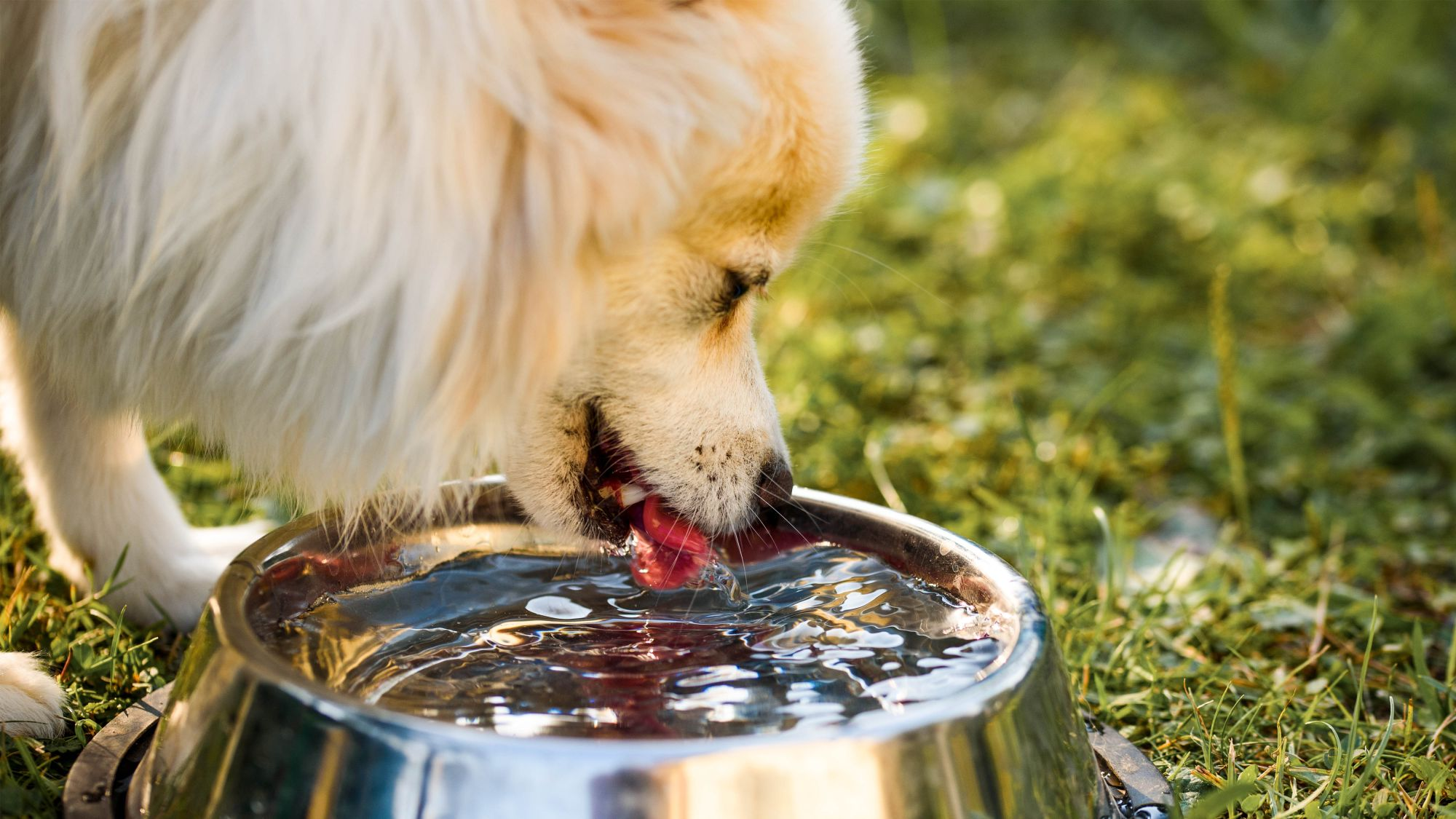The Signs of Chronic Kidney Disease in Dogs
Article

While CKD is far more common in cats than dogs, it’s estimated that 10% of dogs over the age of fifteen will develop the condition.1
Sadly, the resulting deterioration in kidney function is irreversible, but early diagnosis and proper management can slow progression and give a dog with CKD a better quality of life.2What is Dog Kidney Disease?
CKD is caused by a loss of nephron function, the small structures inside a dog’s kidneys that filter blood.Without enough filters, toxins and waste begin to accumulate within the bloodstream, which can cause your pet to feel sick and may also further damage the kidneys. Because kidney tissue doesn’t regenerate, the disease is irreversible and can worsen over time.
You can learn more in our article: Kidney Disease in Dogs.
What Are the Signs of Kidney Disease in Dogs?
Because the kidneys have a large capacity to filter blood, the signs of CKD only become visible once a significant amount of kidney function has been lost. At that point you may notice:
- Urinating excessively
- Drinking a lot of water
- A loss of appetite
- Weight loss
- Lethargy
- Weakness
- Pale gums
- Mouth sores
- Vomiting
- Diarrhea
As you can see, the signs of CKD are varied. This is because the rate at which the kidneys deteriorate, the bodily functions that are affected by kidney failure, and the associated signs of CKD all differ between individual dogs.
What Causes These Signs?
If your dog is drinking water more frequently and urinating a lot, it may indicate a loss of kidney function. Dogs with CKD lose their ability to concentrate urine, and so to compensate they drink more water, which results in larger and more frequent urination.
Other problems can cause an increase in water intake and urination, so it's important to discuss these signs with your veterinarian so they can make a proper diagnosis.
The build-up of waste products and acids within a dog’s bloodstream will often cause nausea, which can decrease their appetite and cause them to lose weight.
As the kidneys deteriorate, they also become inefficient. Instead of recycling useful substances like protein and vitamins, they may eliminate them into urine.

Can a Dog With CKD Experience Complications?
IRIS (International Renal Interest Society) has established internationally recognized guidelines on the diagnosis and management of renal disease. To help veterinarians provide appropriate care, CKD is classified into 4 IRIS stages.Many of the typical signs of CKD become evident at IRIS Stage 3. As the disease enters Stage 4 (the final stage), complications may become more likely.
For example, a dog with CKD may experience anemia because the kidneys are responsible for releasing hormones that stimulate the production of red blood cells. Signs of anemia in dogs include pale gums, fatigue and weakness.
Uremia, the build-up of wastes in the bloodstream, also worsens in the later stages of CKD and can cause your dog to vomit and experience diarrhea. This can increase the risk of dehydration.
What Should I Do if I Spot Signs of Kidney Disease in My Dog?
You should speak to your veterinarian immediately. If your dog is diagnosed with CKD, they’ll receive proper management that may help improve their quality of life.The treatment and management your veterinarian recommends will vary depending upon the stage of the disease, but usually a special kidney diet for dogs with CKD is needed. You can learn more in our article Your Guide to Renal Diets for Dog With Kidney Disease.

Are There Other Ways of Identifying CKD?
The physical signs of CKD only become visible when around 75% of kidney function has been lost3. So while it’s important to be aware of the signs of CKD, the most important thing you can do is take your dog to the veterinarian for regular check-ups – especially if they’re a mature dog.
If your veterinarian is concerned, they can conduct a urinalysis and tests to check the levels of serum creatinine and SDMA biomarkers (Symmetric Dimethyl Arginine) in your dog’s blood, which may help diagnose CKD far earlier than traditional tests4.
With this knowledge, your veterinarian can create a tailored plan to support your dog through every stage of the disease.
Chronic kidney disease is a serious, long-term deterioration of the kidneys and signs are difficult to spot. While there is no cure for CKD, many dogs can enjoy good lives for long periods. That’s why it’s important to familiarize yourself with the signs of CKD and take your dog to the veterinarian for regular check-ups. If you have any concerns or questions about CKD, speak to your veterinarian.
References:
1 Polzin DJ. Chronic kidney disease. In Bartges J, Polzin DJ, editors. Nephrology and urology of small animals. Ames (IA): Wiley Blackwell, 2011: 433-471
2 Rudinsky, et al. Factors Associated with Survival in Dogs with Chronic Kidney Disease, JVIM 2018
3 Yerramilli M, Farace G, Quinn J, Yerramilli M. Kidney Disease and the Nexus of Chronic Kidney Disease and Acute Kidney Injury: The Role of Novel Biomarkers as Early and Accurate Diagnostics. Vet Clin North Am Small Anim Pract. 2016 Nov;46(6):961-93. doi: 10.1016/j.cvsm.2016.06.011. Epub 2016 Jul 30. PMID: 27485279.
4 2020, 'Renal Disease', Veterinary Focus, vol. 30, no. 1, pp. 33
Related Articles
Like & share this page